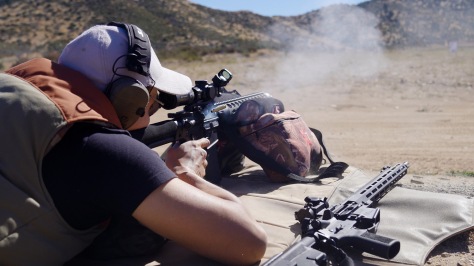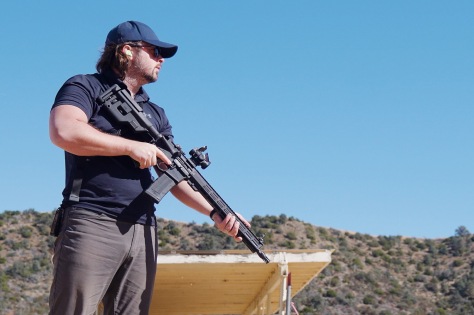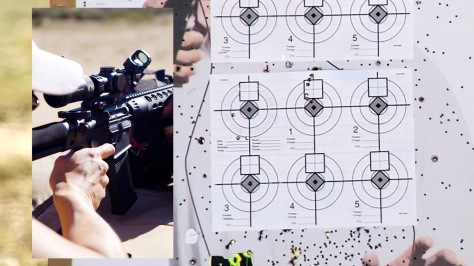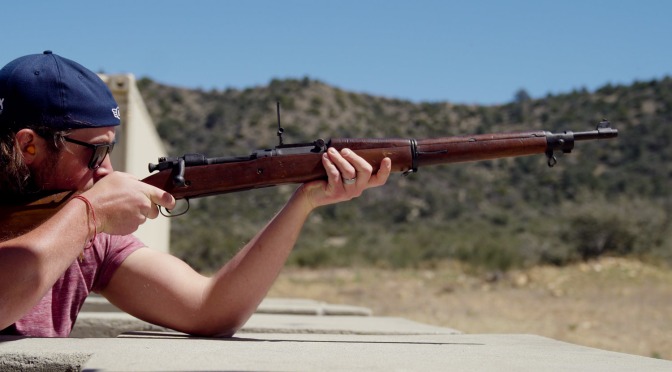We may be getting a new director of the ATF in the near future. The hearing is scheduled for tomorrow, so keep an ear out.
In case you want to read more on your own, I’ll include links to all quoted material and anywhere that I get statistics.
Before jumping into the nomination, a quicker story. I’ll quote directly from Kimber’s site:
“Kimber Mfg. Inc. (“Kimber”) has discovered a quality issue involving the firing pin safety block of certain Kimber R7 model handguns. This recall affects certain Serial Numbers that were shipped from January 10, 2022 through February 14, 2022.
Firearms assembled with the subject firing pin safety block may release multiple rounds from a single trigger pull.”
In case you’ve found yourself in possession of an accidentally automatic Kimber R7, take a peek at their page for more information.
And now onto the main story: Steve Dettelbach.
Let’s start with a look at Firearms News, where I first heard about this little event:
“The U.S. Senate confirmation hearing for Steven Dettelbach, President Joe Biden’s latest anti-gun nominee to head the Bureau of Alcohol, Tobacco, Firearms and Explosives (ATF), could start as early as next week.”
In fact, it’s starting tomorrow. Keep an eye on the Senate for further developments.
Following the failure of David Chipman, Biden’s got a new favorite for the head of the ATF.
Two of my main concerns:
- Is he anti-gun, pro-gun, or neutral?
- Does he know what he’s doing? As in – does he know anything at all about firearms?
Let’s take a look at his supporters first. We already know Biden is nominating him. Another major proponent is the organization “Everytown For Gun Safety”, colloquially known as ‘Everytown.’
“Tell Your U.S. Senators To Confirm Steve Dettelbach As The Next ATF Director.
President Biden has named former U.S. Attorney Steve Dettelbach as his nominee for ATF director. By confirming him for this role, our lawmakers can help make sure the ATF works to keep our communities safe.“
I’m of the opinion that, regarding firearms, education and understanding lead to safety. I think you and I can agree on three simple things:
- That criminals don’t quite care about the legality of the firearms they use to commit crimes.
- In any crime involving a firearm, waiting for the police may mean waiting too long.
- Restricting firearm possession affects legal gun owners.
As we saw during the shutdowns and protests of the recent past, new gun sales and ammo purchases skyrocketed – there’s plenty of people out there who look to firearms as a safety net, and with good reason. If Mr. Dettelbach is indeed on the side of community safety, I see only one way to achieve this: Educate current and prospective gun owners to more effectively use the firearms that they are allowed to have. Bonus points if there aren’t any new restrictions on gun ownership.
As an aside – and probably an important one – Everytown for Gun Safety is a project of Michael Bloomberg’s. This was the same organization who hired David Chipman, Biden’s previous ATF nominee, as a Senior Advisor.
An article on Cleveland.com tells us,
“He has a long history in the public eye. As an assistant U.S. attorney, he prosecuted civil rights and public corruption cases that remain synonymous with Cleveland. As the head of the office, he headed up prosecutions of violent gangs, domestic extremism, political corruption and civil-rights violations.”
And from the NRA’s Institute for Legislative Action,
“Like Chipman, Dettelbach is a dedicated gun controller with a background that proves he would be neither fair nor objective as head of ATF. When running for Ohio Attorney General in 2018, Dettelbach endorsed gun bans, restrictions on lawful firearm transfers, and further expansion of prohibitions on who can lawfully possess a firearm. In short, it’s unclear what gun control measures Dettelbach doesn’t support.”
A nice bit of sass there at the end.
I don’t see much effort from Steve to understand the side of legal gun owners. Nor do I see anything at this time telling me that he’s handled a firearm, learned to use a firearm, or even purchased one. His solution to crime in the community is to follow Biden’s lead in regards to guns.
But let’s give him the benefit of the doubt. I don’t know him as a person, so I’ll have to look at what his colleagues are saying.
From the same Cleveland.com article, quoting Paul Flannery:
“He’s one of those guys that, if you’re in a position of leadership and you need something done, and done well, Steve Dettelbach has always been one of those types of people to do it. It’s why he has been successful.”
Paul Flannery is a former assistant U.S. Attorney who worked with and under Steve.
This particular statement worries me. It’s almost as if this fellow is saying that he’s particularly good at following orders from higher-ups – and considering that his higher-up would be Biden, I’m concerned he will only allow double-barreled shotguns fired wildly into the air.
From former FBI Agent and Defense Attorney John McCaffrey, we hear:
“I think that Steve has what I would call ‘Potomac fever’. He very much wants to be involved in public service at the highest level, and he’s capable of doing it. That’s not a negative; that’s just a reality. He’s always had political ambitions.”
It worries me even more when someone has political ambitions. Political office, to some degree, is a means to an end. If you want to be famous – hey, that’s one way to do it. If you want to change things in your community, politicking is another way.
For him to have ‘political ambitions’… I have to ask why. What is he hoping to achieve with political power? When his hearing comes around, I’ll be looking for one thing above all else:
- Why does he think he’s the right choice to head the ATF?
Let’s treat this like a job interview. Why is he the right fit for the job? It really comes down to what the employer is looking to get done, and whether he’d be the person to get that job done. The ATF is under the banner of the Department of Justice – the DOJ. The DOJ is headed by the U.S. Attorney General, one Merrick Garland. The Attorney General sits on the president’s Cabinet, and answers to the President.
The position of Director of ATF nowadays requires Senate confirmation, and has since 2006. Regardless of the Senate, the fact that Biden nominated Steve to run the ATF likely means that the two agree on firearms. Despite the other letters in the acronym, I can’t imagine that alcohol and tobacco are as hot-button issues nowadays as firearms – nor can I find many statements from Steve on the other letters.
Looking back at the articles, we come to this chilling line:
“Brown, the U.S. senator from Ohio, said Dettelbach’s record as a career prosecutor will hold up. He said he believes all 50 Democrats in the Senate will vote for Dettelbach, meaning that he would be confirmed with a tie-breaking vote from Vice President Kamala Harris.”
We are now in the 117th congress, with 50 republicans, 48 democrats, 2 independents… at least according to Senate.gov. Maybe the Senator from Ohio is being a little hopeful on his count, or maybe he knows something that we don’t. According to the Senate’s Periodical Press, the two independents (Sanders and King) are being counted in the Democratic side of things.
It’s also fun to note that Kamala, while campaigning during the last presidential election cycle, let slip,
“I am a gun owner, and I own a gun for probably the reason a lot of people do – for personal safety.”
Well, Kamala, when the cards are on the table, let’s see if you vote on the side of the anti-gun lobby or on the side of personal protection.
Anyway, it looks like we may have a rough time ahead if Steve gets confirmed. According to what I’ve seen, he’s good at following orders and sits firmly on the side of Biden. He’s interested in high political office, and has a track record of gun control, increased regulations, and more registration measures.
Let’s take a look at one last line from CNN:
“If confirmed, Dettelbach would be charged with implementing Biden’s agenda on guns.”
Let that sink in for a few minutes, then call your Senator.
And remember to keep an eye out for this topic’s buzzwords in the press: Rogue Gun Dealers.
And if you’ve ever seen Steven Dettelbach at a gun range, please drop me a comment. I’m curious.
To see this article in other formats, swing by Rumble or tune in on your favorite Podcasting service.











